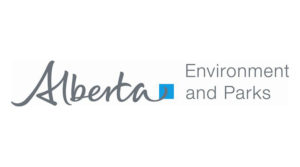This post, the first of a series of articles dealing with the nature of regulation-making authority in Alberta endeavours to understand the breadth and complexity of regulation in various forms. This post was tweaked by a news release concerning a violation of the Environment Protection Enhancement Act. The series will investigate the complex nature of legislation and delegated regulation-making powers, the nature of enforcement, and the possible implications for society and the economy at large.
Suncor pleads guilty
On Friday 16 April the Alberta Department of Environment and Parks issued a press release stating Suncor Energy Products Partnership Product s Suncor Energie, S.E.M.E pleaded guilty to breaching legislation “relating to the release of hydrogen sulphide.” The event happened on 18 July 2018 at its Edmonton Refinery.
Suncor was penalized $100,000. In addition, Suncor agreed to community service to provide fundraising support to the “Strathcona Community Hospital Foundation for the purchase of long-lasting respiratory support medical equipment.” Talk about targeting this community effort. Allowing a large national and international company to pay a fine of $100,000 when Suncor generated operating cash flow of $3.7 billion in 2020- a bad year for oil companies- is barely a slap on the wrist. The fine represents just 0.0000257% of funds from operation. In that bad year, Suncor’s operations brought in roughly $10 million each day- again in a bad year. The previous year, Suncor had about $10- billion in cash flow from operations.
So the plea was an excellent deal for Suncor. On the other hand, the $100,000 does not include the invisible costs of time with lawyers discussing litigation strategy; meetings with Environment and Parks, and discussions with insurance companies that may have taken on some risk from the release.
In addition to reading the press release, I was also curious above the “related information” included in the news release. These two links were titled Environmental compliance overview and Environmental compliance prosecutions. The first overview proclaimed “Alberta Environment and Parks (AEP), every effort is made to ensure our water, air and land are safe for all Albertans to enjoy. Through education and prevention programs, we work with Albertans to encourage compliance with our environmental legislation.” The options available under the legislation include: warning letters; tickets and administrative penalties; enforcement, environmental protection, and water management orders and finally prosecution.
In the tab below are helpful resources such as a listing of compliance orders, enforcement orders, environmental protection orders, orders to vacate, water management orders issued from 2012 to the present. Orders prior to 2012 can be searched for under Open Government. In addition, active allegations not yet proven in court can also be viewed. Two outstanding allegations were listed, the first involving improper disposal of waste going back to April 2017. The second one was an allegation against Bowen Contracting of “knowingly and otherwise contravene a Water Management Order.”
Details, details
In March 2021 for instance there have been a raft of orders against JMB Crushing and associated directors. The website interestingly lists the number of times these orders have been viewed. The number of views is typically 10 to 40. Presumably the main viewership would be lawyers and environmental activist organizations, if they have time.
One Water Management Order NO. 36019 (WMO-WA-36019) is issued against Rbee Aggregate Consulting Ltd and Alberta Transportation. The allegation appeared to be based on a standard template cleared by the Justice Department beginning with a bunch of whereases and then proceeding to a statement of alleged facts in mind boggling detail. This Order referred to an Approval – here are a few samples:
WHEREAS on April 7, 2021 the AEP Inspector reviewed the Approval – and identified the following:
- Clause B requires that construction associated with the works was to be completed by March 9, 1996.
- A stamp extending the term within which construction is to be completed to March 8, 1998.
WHEREAS the installation of a culvert for the purpose of dewatering is also a “works” under section 1(1) (mmm) of the Act; WHEREAS the dewatering does require an approval under the Act or the Regulation
WHEREAS on April 7, 2021 the AEP Inspector reviewed the Approval – and identified the following:•Clause B requires that construction associated with the works was to be completed by March 9, 1996.• A stamp extending the term within which construction is to be completed to March 8, 1998.
The ensuing order required the Parties, including Alberta Transportation, to suspend the dewatering activities, contain and isolate any erodible materials associated with the pit operation or construction; install stabilization materials “in a manner sufficient to stop further gully erosion and the siltation of water;” and assess “all surface water contributions to the Lands and document for the Inspector’s review any additional contributions that would otherwise not be associated with the Approval that does not include precipitation events.”
COMPLIANCE & ENFORCEMENT PUBLIC AND MEDIA RELEASE CRITERIA
I also came upon the criteria that Alberta Environment media relations must follow in releasing information about an environmental emergency. According to this one and one-quarter page policy, dated June 2008, the Department “will be cautious to not release any information that could compromise the investigation” relating to an environmental emergency. This is in spite of acknowledging “accurate, clear, concise and timely information is critical during an environmental emergency.”
The document outlines a hierarchy of information to be given to the media and the public. Enforcement orders, environmental protection orders and water management orders require an information bulletin. In these situations the naming of individuals (as opposed to companies and municipalities) is deemed to be in the public interest where disclosure
-
Presents an opportunity to educate the public about the proper handling of the incident;
-
Helps deter future incidents of a similar nature; or,
-
Warrants a public notice in terms of significant, visible or adverse affect on the environment, or if Alberta Health Services determines there is a public health risk.
Bulletins could be issued within five working days of the order being issued. It is unclear under what conditions the bulletin would be delayed as long as five days.
In the case of administrative penalties, warning letters, or tickets/fines issued under the Environmental Protection and Enhancements Act (EPEA), the Climate Change and Emissions Management Act or the Water Act, Alberta Environment will not issue information bulletins. Information about these regulatory actions will be posted online quarterly within 90 days of the previous quarter.
In the case of charges under the EPEA, the Climate Change and Emissions Management Act or the Water Act, information is to be posted within five days of the charges being laid. The policy spells out in considerable detail was the media release is to contain names of individuals, company or municipality, a brief description of the charges.
Environmental Protection and Enhancement Act (EPEA)
The EPEA is a complex piece of legislation of 160 pages containing 256 sections. There are 11 parts to the Act including 12 pages of definitions alone! The purpose of the Act 10 purposes including:
(a) the protection of the environment is essential to the integrity of ecosystems and human health and to the well-being of society;
(b) the need for Alberta’s economic growth and prosperity in an environmentally responsible manner and the need to integrate environmental protection and economic decisions in the earliest stages of planning
These two purposes obviously conflict and there are eight other clauses which must be considered in the administration of this Act. Other key words or phrases include “need for Government leadership in areas of environmental research, technology and standards.” But where is the role of industry here? Should government departments be paying for environmental and technology research that directly benefits corporations who are endangering the environment? Still it does add near the end of the list “the responsibility of polluters to pay for the costs of their actions,”- that is the enforcement side of the legislation.
An important interpretative aspect of the legislation, amended in 2012, is that courts must read and apply the EPEA in “in conjunction with the Responsible Energy Development Act,” the controversial Act creating the Alberta Energy Regulator. Part 1 of the Act creates advisory committees, councils, with a “Co-ordinating Council” including the CEO of the AER, Chair of the Alberta Utilities Commission, chair of the Natural Resources Conservation Board, and the CEO of the Alberta Science, Research and Technology Authority. Other departments at the table include Economic Development, Resource Development, Agriculture, Environment, Intergovernmental Relations, Health and Wellness, Government Services, and Infrastructure, and Municipal Affairs. Part 1 goes on to enumerate the powers of the Minister (of the Environment) which appears to tie the Minister’s hands somewhat by requiring the Minister to act “in co-operation with other departments of the Government and Government agencies, develop and implement economic and financial instruments and market-based approaches to achieve environmental protection, to achieve environmental quality goals in a cost effective manner and to provide methods of financing programs for environmental purposes.”
Additional posts created under Part 1 include a Chief Scientist, a Science Advisory Panel added under the Notley government in 2016, and an Indigenous Wisdom Advisory Board also in 2016.
Section 35 is an important section pertaining to the disclosure of information. Disclosure of course is an important part of public accountability, public engagement and building trust in the enforcement regime. The section provides a lengthy list of specific and general reports that must be publicly available. That said, the law provides for usual exceptions for trade secrets and requests for confidentiality which appears to be at the sole discretion of the Director. Notably, information relating to an “investigation” or “proceeding” under the Act cannot be disclosed.
The Minister is given generous regulation-making authority in the realm of environmental monitoring activity, powers brought in shortly after the Alberta Energy Regulator was created.
Part 2 spells out the environmental assessment process, including approvals and registrations. In considerable detail the contents of environment impact assessment reports are outlined. The requirement for a assessment on the cumulative impact of a project is absent. Section 52 provides for inter-jurisdictional co-ordination of environmental assessments. The Minister is again given powers to add specificity to the content and format of reports. Meanwhile the provincial cabinet has broad authority to “exempting proposed activities or classes of proposed activities from the application of the environmental assessment process.”
The broader question
Thus far I have only covered two parts of the Act, let alone the 35 other regulations and 20 codes of conduct or codes of practices on such important items such as pits, landfills, and sawmills! Consider the enormous effort that goes into the creation of such a regulatory edifice. The scientific, legal, and medical expertise which is expended in reaching what some actors consider “workable” solutions is immense. Faced with the prospect of lengthy litigation, small players would would simply plead guilty and beg forgiveness rather than put in the systems necessary to daily monitor compliance with the legal requirements involved, for example in using asphalt to pave roads, construct pits, or wash tanker trucks. As industry fairly points out, these requirements add to the cost of running a business. To some it may feel as if their small operation is being smothered by red tape, 
Source: Roads & Bridges
In a world of growing complexity, one has to ask “are governments doing the right thing here?” Is enforcement the answer? Is closing loopholes only for other clever loopholes to be slipped in by corporate lobbyists the answer? Are we reaching the law of diminishing returns as legislation and regulation which grows more and more specific, and yet not specific enough to root out bad behavior? Governmental systems are now a vast web of individual silos loosely coordinated by temporary ministerial barons who preside for a time and mostly accept bureaucratic wisdom. Bureaucratic wisdom typically- not always- involves more analysis and study or another committee or organization to address specific headaches. Political actors, and increasingly deputy ministers, only stay around for 3 or 4 years at most. Few politicians or senior bureaucrats master where the rent-seekers lie and what are the true motivations of their advisors looking for the next career move.
This may sound harsh but my exposure to specialization in a variety of fields leaves with with the impression of a lack of big-picture thinking and what an old mentor, the late WIlliam Pidruchney, (former chair of the Alberta Securities Commission) suggested was a lack of “common sense.”
Related Articles
The below was brought to my attention from a Tweet from Gil McGowan after I began writing this piece two days ago.
https://in-sights.ca/2021/04/17/corporate-fines-paid-from-petty-cash/